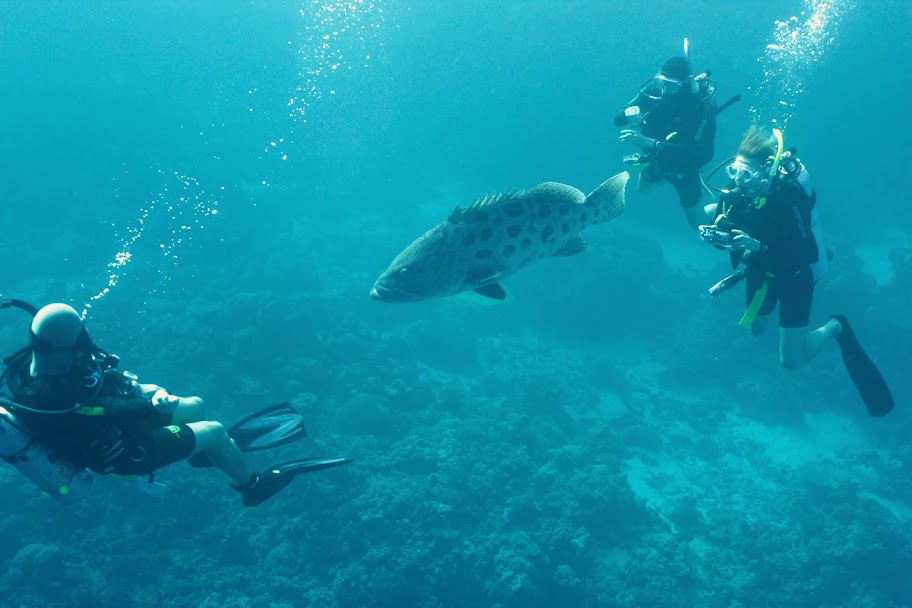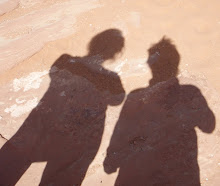There are a few things about taking the geology students to central Australia. Number one, they haven’t done any mapping since they went to Pichi Richi as second-year students, which for them was over a year ago (actually, they map regolith in between there, but that doesn’t really count). Number two, most of the students (with a few notable exceptions) aren’t very well prepared for being in the out-of-doors. Number three, there are 80 or so of them. That complicates things.
To move eighty students to a location more than 1500 km from Adelaide requires two coaches. This is great, because the coaches each have two drivers and they don’t have to stop. But the coaches don’t really have room for the tents, food, cooking gear, and beer that the students bring. This means that we (the obliging staff) drive cargo vehicles. And we have to stop, so we leave a full day and a half before the coaches. Chelsea and I thought that while driving slowly for 1500 km might be a bit tiring, it might be better than trying to sleep on a coach with 40 noisy, sweaty students. So on Saturday morning our convoy of two cargo vans and a 16-foot moving truck (is that a four-meter moving truck here?) headed north for Alice Springs.
After the obligatory stop in Port Wakefield, the drive was really quite lovely. It’s been wetter this year than it has for the previous ten in the eastern half of Australia, and the landscape is unusually green. This also means that kangaroos can find water out in the bush rather than coming to the road (where moisture collects) and jumping in front of cars. Our rented cargo vehicles all lacked roo bars, so this was a good thing. And we never had to drive for too long, because the moving van could only go about 250 or 300 km on a tank of petrol, so we stopped frequently. Driving on the Stuart Highway, which goes from Port Augusta to Darwin, is a pretty simple affair. There is a station every 150-250 km, so in a normal car with a 500 km range, you stop at every other station for petrol (except in our case, where we stopped at nearly every station). The road is so straight that if you need to pass, you just wait until there are no cars, which is nearly all the time.
We stopped for the night in Coober Pedy, the world center of opal mining, before pressing on to Alice Springs the next day. Alice Springs had everything we needed: grocery stores to buy the food we needed to feed the 15 teaching staff for two weeks, wireless internet, and a fabulous café. It also had rain. Who thought I would be digging to the bottom of our bag for my rain pants in Alice Springs? The following morning, we food-shopped, bought ponchos for unprepared students, and met the buses to drive ~130 km north to Aileron, the next station up the Stuart Highway.
Like most of the stations along the highway, Aileron serves up petrol, food, beer, tourist souvenirs, and other necessities of life—in many ways it is the local market and meeting place. Aileron’s name has nothing to do with the flaps on an airplane; my guess is that it is a corruption of Alyuen, a local community of indigenous Anmatjere people. However, Aileron seems to have attempted to make amends for this by erecting a giant (>10m tall) statue of a male Anmatjere hunter on a hill behind the station. At some point, someone thought that some gender equity should be established, so there is a separate sculpture of an Anmatjere woman and child next to the station as well.
Most importantly for us, Aileron has a caravan park and is just a few kilometers from the mapping area. And when we arrived to set up camp, it was raining. We let the students stay in camp rather than mapping in the rain in jeans, but the staff headed off to look at some sapphrine-bearing rocks (sapphrine is a mineral considered indicative of ultra-high temperature metamorphism). The following day the rain had decreased, and by late morning we were out in the field with the
The rocks around Aileron are high-grade metamorphic rocks—granulites, often migmatitic—which means that they have experienced temperatures greater than 700-800°C and some parts of them have begun to melt. Those kinds of pressures and temperatures are found kilometers down in the crust, so the rocks at Aileron have really interesting metamorphic minerals that you don’t get to see at Earth’s surface very often—minerals like cordierite and sillimanite. Remarkably, original details of the rocks are still preserved despite this intense metamorphism—individual packages of migmatitic gneiss progress from very aluminous to barely aluminous, probably turbidites with decreasing clay toward the top (yes, they are somehow still nearly right-side-up). Chilled margins on mafic dikes are still clearly visible, although they have been metamorphosed as well. In a number of locations, shear zones (wet ones which often have kyanite growing in them and dry ones that have become mylonites) cut through these high-grade rocks. And to top it off, this area has experienced a fair number of metamorphic episodes (some people estimate as many as 15) between the deposition/formation of the original rocks and the exhumation of the metamorphosed rocks during the Devonian and Carboniferous (about 350 Ma). This makes it fun to work out the different episodes of deformation.
But enough geo-babble. After the rain went away, it turned suddenly to T-shirt weather and the mapping was great. The food we were cooking in the evening was also great—we made things like chicken laksa, pasta fagiole, and baked potatoes in the campfire. For dessert we had crepes and beer-enhanced damper. It was very satisfying to sit around the campfire with a contented stomach and talk with friends at the end of the day. Well, not quite the end of the day—Martin, the leader of the trip, usually did a brief lecture about local geology and mapping pointers in the evening. But soon after it was off to our tent for a long (and relatively warm) night of sleep before getting up early to set out breakfast and do it all over again.
Folded mylonite-grade shear zone
Before we knew it, the students were finishing up their maps and we packed the vans up to head to Alice Springs for a re-supply and then drive to Ormiston Gorge for our second week of mapping…
(More photos from the first week are posted here.)





